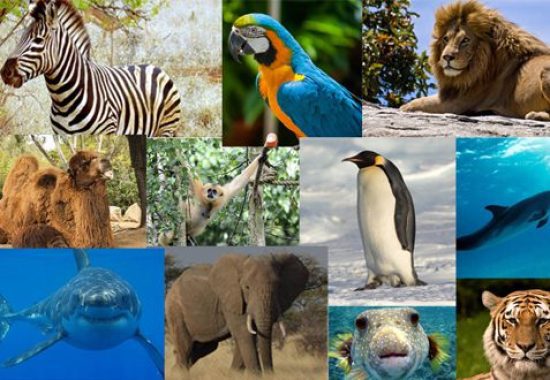
Having spoken to thousands of people, Nigel Risner has developed his own unique understanding of communication styles. Particularly the ones we use in the workplace. He’s come to find that the workplace sounds like a zoo! It is – a communications zoo, with everyone trying to communicate in their own style and language.
Take our quiz to find out which communication category you fall into.
If you want to find out more about your workplace communication style and how you can become a more effective “zoo keeper” – that is someone who can recognise the variety of communication styles used by the animals, and adapt their strategy accordingly – check out Nigel Risner’s book, “It’s a Zoo Around Here”: The New Rules for Better Communication.
“A friendly face, a smile. Someone who takes an interest, who’ll listen for a while.” The dolphin is open and unassertive, warm, supportive and reliable. However, the dolphin sometimes is seen by others as compliant, soft-hearted, and acquiescent. Dolphins seek security and like to feel they belong. They are slow at taking action and making decisions. This procrastination stems from a desire to avoid risky and unknown situations. Before dolphins take action or make decisions, they have to know how other people feel.
The dolphin is the most people-orientated of all the animals. Having close, friendly, personal and first-name relationships with others is one of the most important objectives of the dolphin’s style.
Dolphins dislike interpersonal conflicts so much that they sometimes say what they think other people want to hear rather than what they really think. Dolphins have tremendous counselling skills and are extremely supportive of other people. They are also incredibly active listeners. You usually feel good just being with them. Because dolphins listen so well to other people, when it is their turn to talk, people usually listen. This gives them an excellent ability to gain support from others.
“You’ve got to be noisy, or at least your thoughts should be noisy and colourful and lively.” The monkey has high levels of both directness and openness. Monkeys are animated, intuitive, lively. They are ideas people, and can get very enthusiastic about their plans. However, others may see them as manipulative.
Monkeys are fast-paced people who act and make decisions spontaneously. They are not concerned about facts and details, and try to avoid them as much as possible. This disregard for details may prompt them at times to exaggerate and generalise facts and figures.
Monkeys are more comfortable with “best guesstimates” than with carefully researched facts. They thrive on involvement with people and usually work quickly and enthusiastically with others.
Monkeys always seem to be chasing dreams. They are so persuasive that others can easily get caught up in their dreams. Monkeys always seem to be seeking approval and pats on the back for their accomplishments and achievements. They are socialisers: creative, dynamic and able to think on their feet.
“I want it done right and I want it done now.” Lions are very direct and at the same time guarded. They exhibit firmness in their relationships with others, are orientated toward productivity and goals, and are concerned with bottom-line results. Closely allied to these positive traits, however, are some negative ones: the lion can be stubborn, impatient, tough and even domineering.
Lions tend to take control of other people and situations and can be decisive in both their actions and decisions. They like to move at an extremely fast pace and are very impatient with delays. When other people can’t keep up with their speed, they view them as incompetent.
Lions are typically high achievers who exhibit very good administrative skills; they certainly get things done and make things happen.
Lions like to do many things at the same time. They may start by juggling three things at the same time, and as soon as they feel comfortable with those they pick up a fourth. They keep adding on until the pressure builds to such a point that they turn their backs and let everything drop. Then they turn right around and start the whole process all over again.
“Let me tell you the secret that has led me to my goal. My strength lies solely in my tenacity. ” People who have the elephant behaviour are both indirect and guarded. They seem to be very concerned with the process of thinking, and are persistent, systematic problem-solvers. But they also can be seen as aloof, picky and critical. Elephants are very security-conscious and have a strong need to be right. This leads them to an over-reliance on data collection. In their quest for data they tend to ask lots of questions about specific details. This can be infuriating for other animals.
Elephants’ actions and decisions tend to be extremely cautious. They tend to work slowly and precisely by themselves and prefer an intellectual work environment that is organised and structured. They tend to be sceptical and like to see things in writing.
Although they are great problem-solvers, elephants are poor decision-makers. They may keep collecting data even beyond the time when a decision is due, justifying their caution by saying, “When you are making vast decisions, you cannot do it on half-vast data.”
Why not give our personality test a try to see what careers best suit you.
Notifications